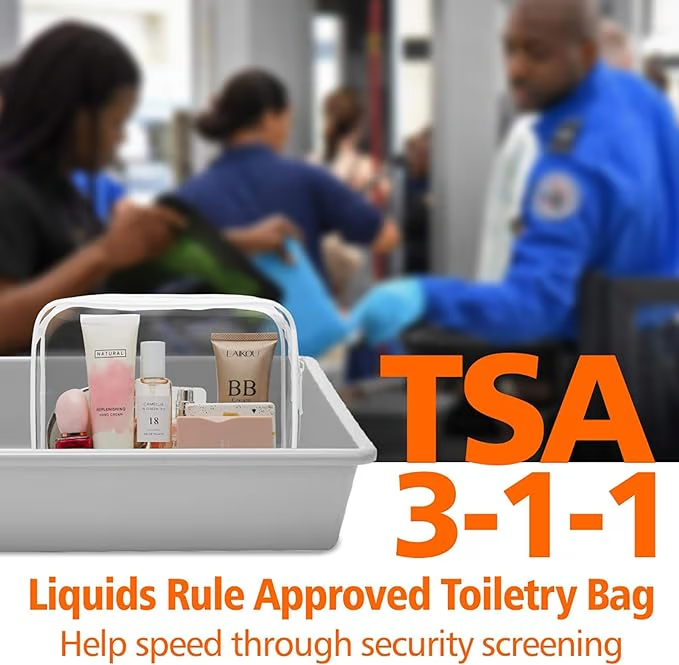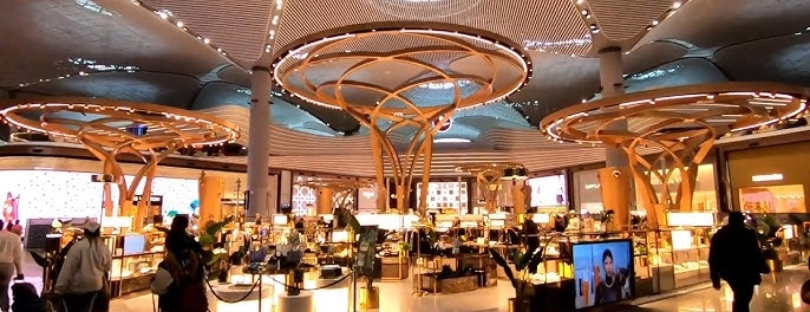
TSA Liquid Limit: The Ultimate Guide for Stress-Free Travel
Traveling can be an exhilarating experience, but the security screening process can often be a source of anxiety for many passengers. One of the most common concerns revolves around the Transportation Security Administration’s (TSA) liquid limit regulations.
To ensure a smooth and hassle-free journey, we have prepared a comprehensive guide that will answer all your questions and equip you with the knowledge needed to navigate the TSA liquid limit with confidence.
What is the TSA Liquid Limit?
The TSA liquid limit refers to the restrictions imposed on the amount of liquids, gels, and aerosols that passengers are allowed to carry in their carry-on luggage. This rule was implemented to enhance security measures and prevent potential threats. However, understanding the specific limitations can be confusing for some travelers.
In essence, the TSA liquid limit adheres to the 3-1-1 rule:
- 3.4 ounces (100 milliliters) or less per container: Each individual container holding liquids, gels, or aerosols must not exceed 3.4 ounces or 100 milliliters in volume.
- 1 quart-sized bag: All containers must fit comfortably within a single, clear, quart-sized, zip-top bag.
- 1 bag per passenger: Each passenger is permitted to carry only one quart-sized bag of liquids in their carry-on luggage.
How many 3 oz bottles can you take on a plane?
Liquids, Gels, and Aerosols: What’s Included?
It is crucial to understand that the TSA liquid limit applies to a wide range of items commonly found in travel bags. These include:
- Beverages (water, juice, soda, etc.)
- Toiletries (shampoo, conditioner, lotion, toothpaste, etc.)
- Cosmetics (foundation, mascara, lipstick, etc.)
- Medications (both prescription and over-the-counter)
- Food items (sauces, jams, spreads, etc.)
- Other products with a similar consistency (sunscreen, hand sanitizer, etc.)
Exceptions to the TSA Liquid Limit
While the 3-1-1 rule generally applies to most liquids, gels, and aerosols, there are a few notable exceptions. These include:
- Medically Necessary Liquids: Medications, baby formula, breast milk, and other medically necessary liquids are exempt from the 3.4-ounce limit. However, it is advisable to declare these items to TSA officers for inspection.
- Frozen Liquids: Frozen liquids are permitted as long as they are completely solid when presented for screening. If any liquid is present at the bottom of the container, it must comply with the 3.4-ounce limit.
- Duty-Free Liquids: Liquids purchased at duty-free shops after security screening can be carried on board in secure, tamper-evident bags (STEBs). These bags must remain sealed until the final destination.
Packing Tips for Liquids
To streamline your travel experience and avoid any unnecessary delays at security checkpoints, consider these packing tips:
- Use Travel-Sized Containers: Invest in travel-sized containers that comply with the 3.4-ounce limit. These are readily available at most drugstores and supermarkets.
- Consolidate: If possible, consolidate your liquids by transferring them into smaller containers. This will help maximize space in your quart-sized bag.
- Place Liquids in a Separate Bag: Pack your quart-sized bag of liquids separately from your other carry-on items. This will facilitate the screening process and prevent any potential spills.
- Declare Medically Necessary Liquids: If you are carrying medically necessary liquids, inform the TSA officer before the screening process begins. This will ensure a smooth and efficient inspection.
Consequences of Non-Compliance
Failure to comply with the TSA liquid limit can lead to delays and inconvenience at security checkpoints. In some cases, prohibited items may be confiscated, and passengers may be subjected to additional screening. To avoid such situations, it is essential to adhere to the regulations and pack your liquids accordingly.
Navigating Security with Ease
By understanding and adhering to the TSA liquid limit, you can navigate security checkpoints with ease and embark on your journey with peace of mind. Remember, preparation is key to a stress-free travel experience.
Additional Tips for Smooth Security Screening
In addition to adhering to the liquid limit, here are a few additional tips to ensure a smooth security screening process:
- Arrive Early: Give yourself ample time to go through security, especially during peak travel seasons.
- Dress Appropriately: Wear shoes that are easy to slip on and off and avoid excessive jewelry or accessories that may trigger alarms.
- Be Prepared to Remove Electronics: Laptops, tablets, and other electronic devices larger than a cell phone must be removed from your carry-on bag and placed in a separate bin for screening.
- Follow Instructions: Listen carefully to TSA officers and follow their instructions promptly.
- Be Patient and Courteous: Maintain a positive attitude and show respect to TSA officers and fellow passengers.
 Europe rules
Europe rules
In most European airports, the liquid limit for carry-on luggage follows the 100ml rule:
- 100ml (3.4 ounces) or less per container: Each individual container holding liquids, gels, or aerosols must not exceed 100ml in volume.
- 1-liter (1-quart) sized bag: All containers must fit comfortably within a single, clear, resealable plastic bag with a maximum capacity of 1 liter.
- 1 bag per passenger: Each passenger is allowed to carry only one such bag in their carry-on luggage.
Exceptions:
- Medically Necessary Liquids: Medication, baby food/milk, and other medically necessary liquids are exempt from the 100ml limit, but it’s recommended to carry supporting documentation (e.g., prescription) and declare these items to security officers.
- Duty-Free Liquids: Liquids purchased at duty-free shops after security can be carried onboard in a sealed security tamper-evident bag (STEB), along with the receipt. These can be larger than 100ml but must remain sealed until the final destination.
Conclusion
Traveling should be an enjoyable experience, and by understanding the TSA liquid limit, you can ensure a seamless journey through security checkpoints. Remember to pack your liquids in compliance with the 3-1-1 rule, be prepared for screening, and maintain a positive attitude throughout the process. By following these guidelines, you can embark on your travels with confidence and peace of mind.











